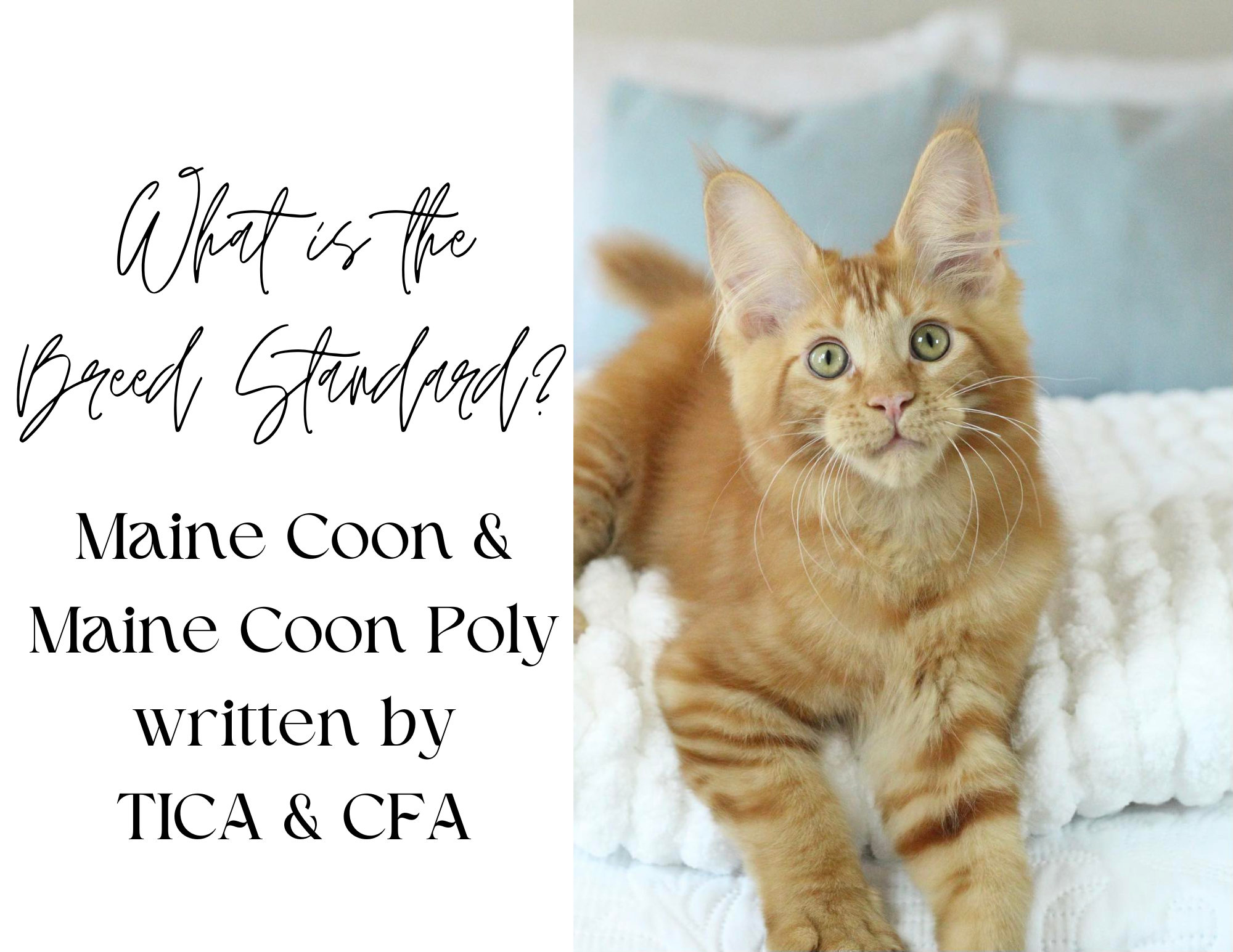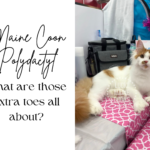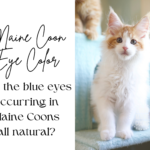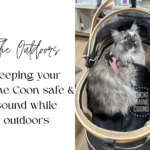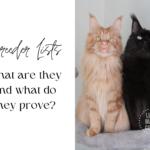Maine Coon Breed Standard
Did you know there is a written Maine Coon breed standard? The breed standard describes the “perfect” Maine Coon. Each association has their own written breed standard for the Maine Coon breed. As a breeder, we strive to adhere to the breed standard as closely as possible. We show our Maine Coons often with CFA, Cat Fanciers Association and TICA, The International Cat Association. By doing so we are not only able to get an unbiased opinion based off of the breed standard on our cats from judges but, we are also able to connect with other breeders, learn, and make improvements to our breeding program.
Every pedigree cat breed has a written standard. If you are a breeder, it is important to familiarize yourself with said standards. This information is available and easy to access for all. You can find these on TICA, The International Cat Association and CFA, Cat Fanciers Association. For Maine Coons, the breed standard for Maine Coon & Maine Coon Polydactyl is on TICA. CFA does not accept Maine Coon Poly for showing, only for registration. There are other associations outside of CFA & TICA, these are just the two we are specifically registered with and involved in.
Maine Coon & Maine Coon Poly Breed Standard (TICA)
- (HEAD) Shape: Slightly longer than wide, as measured from back of head to tip of muzzle, while still in proportion to body. Viewed from the front, a square muzzle under high and broad cheek bones give the appearance of an overall broad modified wedge-shaped head.
- (HEAD) Eyes: Large and oval. Appear almost round when wide open. Slight oblique set where outer corner of eye points toward outer base of ear. Distance between the eyes is approximately one eye-width apart. Color: Any shade of green and/or gold. No relation to coat color. Blue and odd eyes accepted in only white and with white.
- (HEAD) Ears: Large, well furnished, wide at base, tapering to appear pointed by the enhancement of lynx tips. Taller than the width at base but still in balance with head length. Outer base just above the level of the top of the eye. Outside edges have a very slight outward tilt, not past 11and 1 o’clock. Distance between inner ear edges is approximately one ear’s width apart and forms a rectangle with outer edge of the muzzle. Furnishings extend beyond outer ear edge. Lynx tips maintain the balance of the ear without heaviness or droop.
- (HEAD) Chin: Wide and deep enough to complete square look of muzzle; in line with upper lip (see
Profile) - (HEAD) Muzzle: Well-defined, square, with a definite box. Viewed from above, left and right edges are parallel, with muzzle size in balance with the rest of the head. Distinct transition between muzzle and cheek bones.
- (HEAD) Profile: In profile view of entire head structure (back of head to tip of nose), balance is critical. Gently curving forehead flows into a slight concave curve at the bridge of the nose and continues into a smooth nose line free of humps and/or bumps. Straight, vertical line extends from the tip of nose, through upper lip to bottom of chin. Depth of chin is approximately 1/3 of overall depth of the muzzle.
- (HEAD) Neck: Medium long, substantially thicker in mature males as compared to adolescent males and/or females.
- (BODY) Torso: Large, substantial, muscular, and rectangular. Females generally smaller than males. Body is relatively long with all parts in proportion, to create the appearance of a well balanced rectangle. Broad, deep chest. Equal width from shoulders to hips, with depth of body. Allowance for slow maturation. Breed is considered “large” in size, but balance and proportion are of equal importance.
- (BODY) Legs: : Substantial, medium length, in proportion to body to complete a rectangle. All legs straight without cow hocking or toeing-out.
- (BODY) Feet: : All toes, excluding dewclaws, touch the floor. Tufts start between the toes and are visible beneath the pads where they extend outwards.
MC: Large, rounded and well-tufted. MCP: Large and well-tufted. Additional toes allowed on either fore or hind paws or both. Mitten or patty foot acceptable. Symmetrical expression preferred. Maximum 7 toes per foot. - (BODY) Tail: Tail as long as body (from tail-base to shoulder blades). Wide base tapers to tip with full flowing fur.
- (BODY) Boning & Musculature: Substantial boning adequate to support structure and size of the cat. Firm musculature, without flab. Allowance for females and immaturity.
- (COAT/COLOR/PATTERN) Length: Uneven; shorter on shoulders, gradually lengthening down back and sides. Frontal ruff, belly shag and britches (more apparent with age). Tail fur long, full, flowing.
- (COAT/COLOR/PATTERN) Texture: All-weather coat often with silky texture. Slight undercoat provides body, but coat falls smoothly.
- (COAT/COLOR/PATTERN) Color & Pattern: Clear pattern and color, as described in the UCD. Acceptable patterns are ticked, classic, spotted, mackerel, and shaded/chinchilla. Some white on all four feet of cats with white.
For the full breed standard, TICA-MAINE COON BREED STANDARD – CFA-MAINE COON BREED STANDARD
